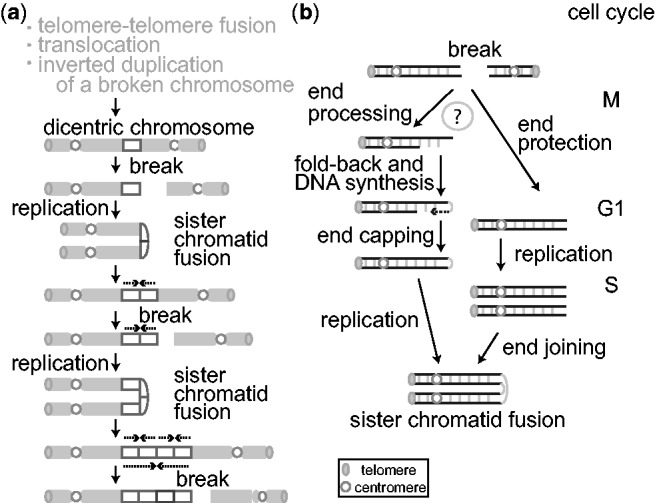Figure 1.

(a) Sister chromatid fusion during the BFB cycle promotes gene amplification. Only the fate of one broken chromatid is shown. Three events that can create a dicentric chromosome are listed on the top (see in the ‘Introduction’ section of the main text). Following a chromosome rupture and DNA replication, a broken chromatid undergoes inverted duplication (dotted arrows) with a fusion at the end (sister chromatid fusion), which results in the formation of a dicentric chromosome. Repeated occurrence of the cycle leads to the unequal distribution of chromsomal regions (rectangle). (b) Two models for the nucleotide-level mechanisms of sister chromatid fusion: end processing–capping-replication model (left) and NHEJ-dependent model (right).
